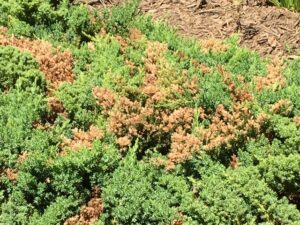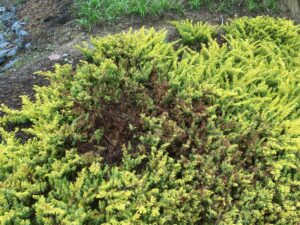Pest Alert – Tip Blight on Conifers
go.ncsu.edu/readext?940966
en Español / em Português
El inglés es el idioma de control de esta página. En la medida en que haya algún conflicto entre la traducción al inglés y la traducción, el inglés prevalece.
Al hacer clic en el enlace de traducción se activa un servicio de traducción gratuito para convertir la página al español. Al igual que con cualquier traducción por Internet, la conversión no es sensible al contexto y puede que no traduzca el texto en su significado original. NC State Extension no garantiza la exactitud del texto traducido. Por favor, tenga en cuenta que algunas aplicaciones y/o servicios pueden no funcionar como se espera cuando se traducen.
Português
Inglês é o idioma de controle desta página. Na medida que haja algum conflito entre o texto original em Inglês e a tradução, o Inglês prevalece.
Ao clicar no link de tradução, um serviço gratuito de tradução será ativado para converter a página para o Português. Como em qualquer tradução pela internet, a conversão não é sensivel ao contexto e pode não ocorrer a tradução para o significado orginal. O serviço de Extensão da Carolina do Norte (NC State Extension) não garante a exatidão do texto traduzido. Por favor, observe que algumas funções ou serviços podem não funcionar como esperado após a tradução.
English
English is the controlling language of this page. To the extent there is any conflict between the English text and the translation, English controls.
Clicking on the translation link activates a free translation service to convert the page to Spanish. As with any Internet translation, the conversion is not context-sensitive and may not translate the text to its original meaning. NC State Extension does not guarantee the accuracy of the translated text. Please note that some applications and/or services may not function as expected when translated.
Collapse ▲Conifers of many kinds can be affected by fungal infections during cool wet weather or if the plants are in too much shade. One of the most common diseases is Phomopsis Tip Blight. This plant disease is caused by the fungus Phomopsis juniperovora. The pathogen attacks the newest growth causing a tip blight (branches dying at the tip) or dieback of whole branches.
Symptoms appear during the growing season. Branch tips yellow and eventually turn a brown rusty color. If you look closely at the dead tissue you will see tiny black specks on the leaf tissue. This disease is most destructive during cool wet weather or if overhead irrigation is overused. Conifers in shade are susceptible as well.
There isn’t much you can do besides trying to keep plants healthy through proper planting, fertility and watering, pruning out blighted branches and applying fungicide applications of general landscape fungicides according to labelled instructions.






